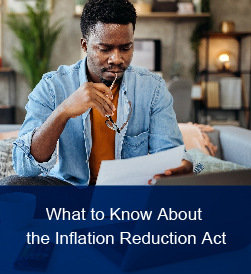Written by Steve Andrews

R-rated? Most of us are familiar with movie theater ratings that grade certain films as “R” for “Restricted,” meaning, if you were younger than 17, you couldn’t buy a ticket for that show unless you were accompanied by an adult. While the opening credits for 2023 are still rolling, many economists, investors, and critics have already assigned it an “R” rating for “Recession”.
Onward and Upward
Despite the dire outlook, the year has gotten off to a good start if global stocks are any indication. Investors’ moods are fickle, and there’s no guarantee that the optimism will continue, but there’s no denying that the mood has improved since the holidays. There are several factors at play - the reopening of China’s economy; a warmer-than-normal winter in Europe (coupled with falling energy costs there); and a sustained decline in U.S. inflation.
Stock Market
From its trough in mid-October through mid-January, the S&P 500 is up over 13%. We remind readers that the stock market is not the economy – and vice-versa. However, stocks are forward looking and anticipate how the economy (and, thus, corporate profits) might look over the next few years. Of late, they seem to be signaling better days ahead as data indicates that the sharp rise in prices from mid-2021 through mid-2022 has peaked, and that should take some pressure off the Fed from raising interest rates to the point where they severely impact economic growth.
Investors took the advice “Don’t fight the Fed” to heart last year, dumping stocks and bonds as the Fed aggressively lifted short-term rates from near-zero to near-4.50%. Markets expect the Fed will lift rates by a quarter-point (0.25%) at each of the first two FOMC meetings this year (February 1 and March 22). That would lift short-term rates (Fed Funds, etc.) to around 5.00%. Will that be the end of it? It’s still too soon to tell but, if the bond market is any indication, it may well be.
Treasury Rates
A look at the 2-year Treasury rate, which reflects where investors expect short-term rates to average over the next 2 years, tells us that, right now, investors don’t see short rates remaining at 5.00% (or wherever they peak) for very long. The 2-year Treasury yield has fallen over a quarter-point (0.25%) since early January to near 4.10%. That rate implies that, following the hikes over the next few months, there will be some Fed rate cuts before the current 2-year Treasury matures in late 2024.
Of course, the fickle nature of investors extends to the bond market as well, so today’s expectations will change as economic data changes. Still, at the base of it all, inflation holds the trump card and will have the most say in how the economy and markets perform this year.
Consumer Price Index
On that front, the news continues to buoy sentiment. Consumer Prices (CPI) were up 6.5% in December from December 2021 - down from the 7.1% year-over-year rise in November, and down from its 9.1% peak last June – while “core” CPI, which strips out volatile food and energy costs, was up 5.7% from December 2021, which was down from 6.0% in November.
Nearly 18 months ago, we became concerned that inflation was due to flare up because, on a 3 and 6-month annualized basis, CPI was rising closer to 11% even as, on a 12-month basis, prices were up “just” 5% and the Fed was dismissing the rise as temporary. Now, we are encouraged because those same 3 and 6-month inflation trends that worried us in 2021 are falling.
Through December, the 3-month CPI (annualized) was 1.8%, while core CPI is up 3.1%. As we saw when inflation was rising in 2021, any change in the level of growth (up or down) over time first appears in the 3-month annualized rates and these rates suggest disinflation is taking hold. While not the same thing as deflation (which means prices are falling along with the rate of inflation), disinflation means prices are still rising, but at a slower pace. The faster the inflation rate falls, the faster the Fed can ease back on its tightening cycle. In addition, both Producer Prices (PPI) and the Fed’s preferred measure of inflation, the Personal Consumption Expenditures (PCE) deflator, are following in similar fashion.
Hope for 2023
Meanwhile, some economic fundamentals had softened at year end, but not to the point that we are seeing the flashing red signs for recession. Housing has been hamstrung by supply issues for years now, and those headwinds were joined by rising prices and, lately, mortgage rates which, combined, boosted the average monthly mortgage payment 55% in 2022. Manufacturing had slowed in Q4 as consumers shifted spending patterns toward services (travel, dining & entertainment, etc.), but even services took a sharp step back in December, with growth falling for the first time since the economy was shut down back in May 2020.
At the same time, consumers who drive almost 70% of GDP growth remain in good stead, with healthier household finances compared to past economic downturns, while bank balance sheets remain strong in the face of robust lending activity. Nearly $1.2 trillion in loans were made last year – nearly three times the volume of previous years - and that money will help support investment and growth in coming quarters.
While there’s no guarantee that businesses and consumers will continue to invest and spend, businesses are still struggling to find workers, which argues that they will keep investing to make existing workers more productive, while consumers, with spending in their blood, are supported by rising wages and an estimated $1.7 trillion in remaining “savings” from the COVID-related government payments.
In Conclusion
For now, the ”R” word will remain a concern for investors as inflation remains well above the Fed's target. Services inflation, especially rents, will remain stubborn for a while and Fed policymakers will continue to temper any market expectations for rate cuts for the time being, as the path of disinflation will have some pitfalls, but they could begin to soften their tough rhetoric sometime this Spring and bring to an end the steepest rise in rates in nearly 30 years. Since the early 1980’s, the markets have gone through seven Fed rate-hiking cycles. Once the Fed finished raising rates (a pause), they held rates steady for six months, on average, before the first rate cut. Long-term rates like the 10-year Treasury are easing back to September 2022 lows. Along with the 2-year Treasury, it seems to suggest that it, too, sees the end of rate hikes in the not-too-distant future.
This recovery is different from those before, since the shutdown-induced recession was like none before, so historical parallels are not as useful. Fear and caution were the drivers of market activity in 2022, but market volatility has eased as the New Year unfolds. Whether this signals a real turnaround in bearish sentiment, or simply a short respite, remains to be seen but, given the low expectations in place last year, it doesn’t take much “less bad” news to lift spirits. Let’s see if it continues.


.png)




